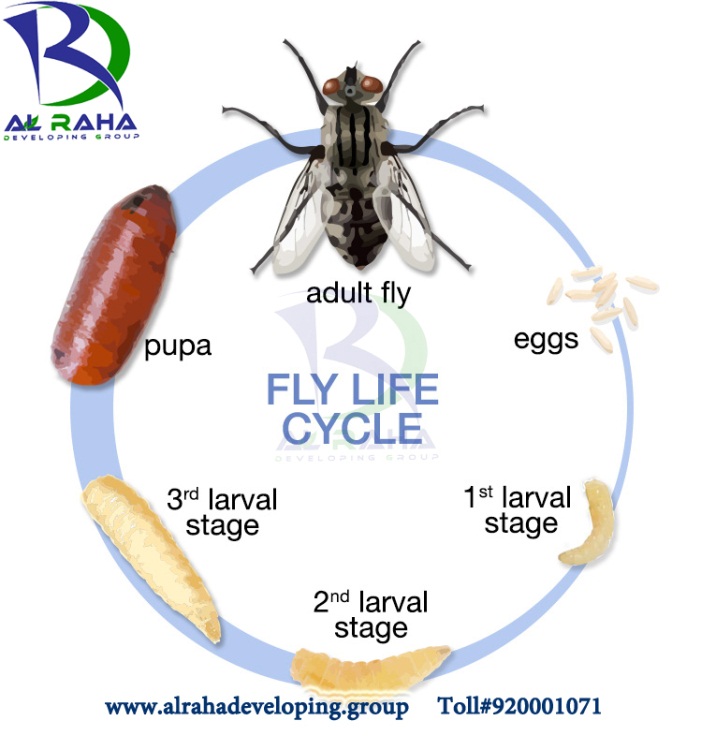Flies.
There are the thousands of species of flies, only a few are common pests in and around the home. Some of the more common nuisance flies are the house fly (Musca domestica), the face fly (Musca autumnalis) , the stable fly (Stomoxys calcitrans) , the little house fly (Fannia canicularis) , and several species of blow flies (especially in the genus Lucilia).
These pests breed in animal wastes and decaying organic material, including animal carrion and food waste from which they can pick up bacteria and viruses that may cause human disease.

Life Cycle
The female fly deposits her eggs in animal feces, carrion or moist organic material where the larvae, or "maggots," complete their development, feeding on bacteria associated with their developmental site.
The maggots will pass through three larval stages increasing in size with each stage.
The rate of fly development is dependent upon temperature; and under optimal summertime conditions, flies may develop from egg to adult in as little as 7 days. Once the female fly has mated, she can lay several batches of eggs, typically containing over 100 eggs each.
Flies Pest Control
While humans commonly find adult flies to be the most bothersome life stage, the larval stage is the best target for management efforts. Elimination of larval habitat is the preferred method of pest fly suppression. By removing material in which the larvae develop, the life cycle of the fly can be broken, preventing subsequent production of adult flies. Flies can quickly develop resistance to insecticides.
So Al Raha Developing always developed a method and pestcides of Flies Pest Control
Damage
Because they have sponging mouthparts, house flies cannot bite; however, they may play an important role in disease transmission to humans and animals.
House flies can carry a number of disease agents which they pick up while feeding on animal feces, animal body secretions, or kitchen waste and which they can deposit onto human foods following contact with or feeding on these human foods.
House flies are known to carry bacteria and viruses that cause conditions such as diarrhea, cholera, food poisoning, yaws, dysentery, and eye infections. House flies can also cause nuisance to homeowners by their persistent attempts to land on human foods or even humans themselves (they will readily feed on animal sweat and other body secretions).
House flies also leave dark fecal and regurgitation spots on wall surfaces where they rest, and with a preference for resting on light colored surfaces, these spots can be quite noticeable when fly numbers are high
General House Fly Control Management
We can use insecticide liquid concentrates, insecticide dusts, pyrethrin aerosols, fly light traps, fogging materials, fly baits, and fly traps .





